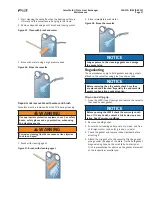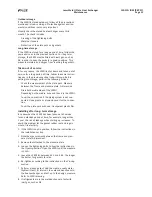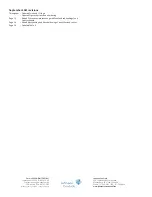
190.210-IOM (SEP 21)
Page 21
LazerWeld II Plate Heat Exchanger
Maintenance
Outdoor storage
If the LZWII is stored outdoors, follow all the precautions
mentioned in
Indoor storage
. Protection against environ-
mental conditions is also very important.
Visually check the stored heat exchanger every third
month. The check includes:
• Greasing of the tightening bolts
• Metal port covers
• Protection of the plate pack and gaskets
Long-time storage
If the LZWII is stored for a long period of time, follow the
same advice as in the previous sections. For long term
storage, the LZWII must be filled with inert gas, such as
N2, in order to keep the gaskets in good condition. This
prevents moisture and oxygen from reaching the gaskets.
Taken out of service
If, for any reason, the LZWII is shut down and taken out of
service for a long period of time, follow the same instruc-
tions as in the previous section
. Before
putting into storage, perform the following actions:
• Check the measurement of the plate pack. Measure
between the frame and pressure plate, A dimension.
• Drain both media sides of the LZWII.
• Depending on the media, rinse and then dry the LZWII.
• Cover the connection if the piping system is not con-
nected. Use a plastic or plywood cover for the connec-
tion.
•
Cover the plate pack with non-transparent plastic film.
Installing after long-term storage
In cases when the LZWII has been taken out of service
for an extended period of time, for example, longer than
1 year, the risk of leakage when starting up increases. To
avoid this problem let the gasket rubber rest and regain
most of its elasticity.
1. If the LZWII is not in position, follow the instructions in
the
section.
2. Note the measurement between the frame and pres-
sure plate (A dimension).
3. Remove feet attached to the pressure plate.
4. Loosen the tightening bolts. Follow the instructions in
the
section. Open the LZWII until the measure
is 1.25A.
5. Leave the LZWII for between 24 h and 48 h, the longer
the better, for gaskets to relax.
6. Re-tighten according to the instructions in the
section.
7. Perform a leakage test. Add the media, usually water
(hydraulic test), at intervals to avoid sudden shocks to
the heat exchanger, and test up to the design pressure.
Refer to LZWII drawing.
8. If refrigerants are in the welded channels, test with
inert gas, such as N2.


































